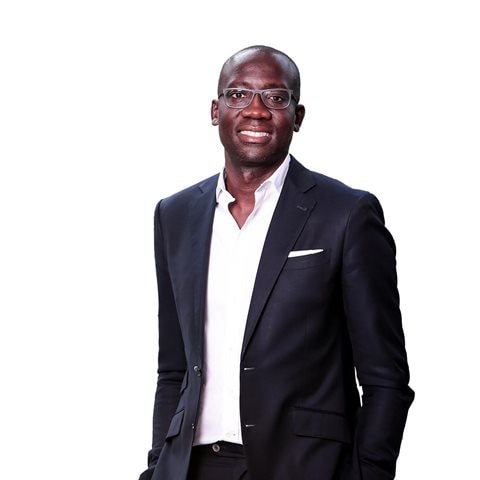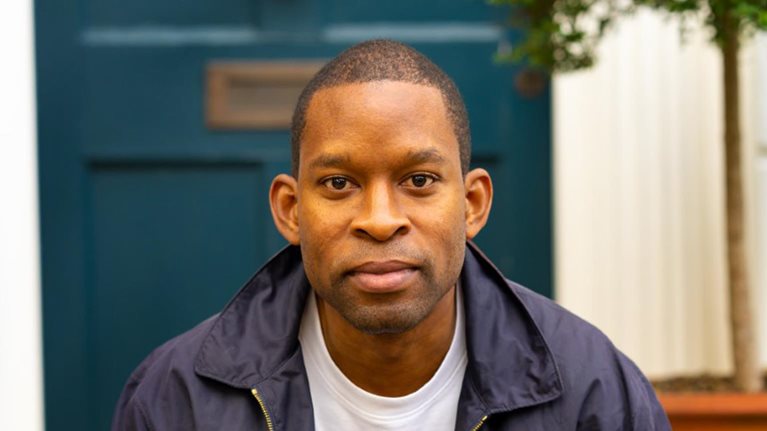By 2050, about 25 percent of the world’s population will be from the African continent. What can be done now to support Africa’s educational infrastructure, bountiful resources, and technological innovation? On this episode of The McKinsey Podcast, McKinsey partner Mayowa Kuyoro and senior partner Acha Leke share details from their latest research on Africa and outline the strengths and assets the continent has that can help it vastly improve its productivity and reinvigorate its economy. They join host and editorial director Roberta Fusaro.
But first, McKinsey global director of geopolitical risk, Ziad Haider, is here to give us a quick update on the current state of world geopolitics.
This transcript has been edited for clarity and length.
NATO expands
Lucia Rahilly: The geopolitical climate obviously continues to be volatile and complex. Talk about some of the key takeaways from recent developments in the war in Ukraine.
Ziad Haider: Foremost, the humanitarian dimension of this war continues to unfold with the casualties and refugees. The human suffering can’t be overstated.
In terms of key moments that occurred since we last spoke, there are two in particular: the NATO summit that happened over the summer and the unfolding suspension of the Black Sea grain deal.
In terms of the summit, we zero in on a few things. First, NATO members continue to express their support for Ukraine in the face of the conflict and to sustain their support of military training and equipment. At the same time, there were also questions about the nature of that equipment—a point of continued debate.
Want to subscribe to The McKinsey Podcast?
Another dimension of the summit was the question of Ukraine’s NATO membership. The summit ended with [the sentiment] that Ukraine belongs in NATO. But the membership process would formally commence once certain conditions are met, and that’s a timeline Ukraine wants accelerated.
The other important development was NATO’s continued expansion, particularly Sweden’s candidacy.
What about the breadbasket?
Lucia Rahilly: As far as humanitarian issues go, you mentioned Russia pulling out of the grain deal with Ukraine. What might this mean for vulnerable populations in the global south and elsewhere, but also for geopolitical stability more generally?
Ziad Haider: Ukraine and Russia have both been important suppliers of grain and wheat globally, and even beyond. In Singapore, where I sit, Ukraine was a significant source of eggs and sunflower cooking oil.
The conflict impeded the ability of Ukraine to export those products through the Black Sea, which is where many of its ports are. Last July, a deal was struck by Türkiye and the UN—brokered by Türkiye—to allow the shipment of certain grain products out of Ukraine through the Black Sea.
That deal was suspended or lapsed, in essence, this July.
Not incidentally, we also have climate change and El Niño weather patterns. Furthermore, we see countries continue to impose restrictive measures on products. In India, we just had the government announce restrictions on exports of non-basmati rice.
Meetings in China
Lucia Rahilly: Let’s turn to China. We’ve seen a number of President Biden’s top aides fly into Beijing this summer. What are some of the outcomes of recent talks?
Ziad Haider: The top line here is it’s not so much the outcomes of any one of these meetings as much as there are now formal high-level channels back in place to allow both sides to think of areas where they may be able to cooperate.
One unofficial and quite noteworthy meeting was a visit by the former Secretary of State Henry Kissinger. Kissinger played a key role in the opening of China for Nixon’s visit there in 1972 and the normalization of relations.
Now at the age of a hundred years old, he was back in China. He met with both President Xi and the defense minister of China.
The effort to set a floor continues. But alongside that, we’re in a strained strategic environment between both sides as well.
Regulations, restrictions, and China
Lucia Rahilly: What is the state of new regulations affecting multinationals operating in China?
Ziad Haider: One regulation coming from the US side is restrictions on the export of chips.
We also saw a number of leading US chip company CEOs make a visit to Washington, DC, to communicate their points of view, because alongside the geopolitical competition, China is an important market. Recently, we saw the Chinese government put in place export regulations, export controls on germanium and gallium, which are important elements of the semiconductor ecosystem.
There’s an enduring theme on both sides, frankly, of Chinese government data sensitivity. China has expanded the definition of data security to include data that could be seen as not only compromising state secrets but also compromising national interests. That change, from “state secrets” to “national interests,” is important, because it expands the kind of dragnet of data that is now considered sensitive.
That’s something else companies have to deal with. Data are a key space to watch in terms of how companies walk these tightropes in the US, China, and EU.
Lucia Rahilly: Thanks so much for joining us.
Ziad Haider: Thank you.
Lucia Rahilly: And now, a young and growing population, land rich in resources, and technological advancement—the African continent is poised for a reimagining of its economic opportunity.
Africa is a diverse continent
Roberta Fusaro: Acha and Mayowa, you were both among the coauthors of a sweeping McKinsey report on the economy of Africa and what’s happening at continent, country, city, and company levels. I want to get into the data and the details. But just to set the right context for the conversation, there is no “one Africa,” correct?
Acha Leke: You’re right. One of the key messages is that there is no one Africa. Africa today is a $2.5 trillion economy. It’s over 1.3 billion people. But it is spread across 54 countries. People tend to think of it as a monolithic grouping, but they are very different.
There is no one Africa: Africa today is a $2.5 trillion economy. It’s over 1.3 billion people, but it is spread across 54 countries.
Roberta Fusaro: The report organizes the continent into four groups of countries: consistent growers, recent accelerators, recent slowdowns, and slow growers. Can you expand on those descriptions?
Acha Leke: You have the consistent growers, whose growth has been above average for 20 years. You have a set of countries that are recent accelerators, that accelerated their growth in the last ten years. You have the recent slowdowns. And you have the slow growers that have only grown slowly for 20 years.
Roberta Fusaro: What do the data say about the growth or lack of growth in these groupings?
Acha Leke: A number of things. First, about half of Africa lives in above-average countries. They’ve been growing above the average for the past ten years. But those countries represent only a quarter of Africa’s GDP, because they tend to be smaller countries in East and West Africa primarily.
What has dragged down the growth average is the fact that the top six economies—Nigeria, Egypt, Morocco, South Africa, Algeria, and Angola—have all slowed down.
Billions of bright futures
Roberta Fusaro: That’s interesting. This report opens against the pessimistic backdrop of falling GDP and lagging productivity in Africa. Yet the message overall is fundamentally positive. Why are you optimistic about the future of the continent, Acha?
Acha Leke: One out of every six people in the world is from Africa. By 2050, that number is going to rise to 2.5 billion. That’s almost one out of every four people in the world. On the other hand, it’s the fastest-urbanizing region in the world. Five hundred million people are going to move from the countryside into cities by 2040.
One out of every six people in the world is from Africa. By 2050, that number is going to rise to 2.5 billion. That’s almost one out of every four people in the world.
Roberta Fusaro: So a massive population plus fast urbanization. What does this mean for business?
Acha Leke: As part of our work, we’ve identified billion-dollar companies in Africa. We call them African champions. These are companies that make $1 billion or more in revenue—the private sectors, public sector companies, state-run enterprises, multinationals.
Interestingly, when Mayowa and I present this report, we always ask the question, “How many billion-dollar companies do you believe Africa has?” And in most cases, we hear somewhere between 50 to 100. But the answer is 345 (so call it 350). Obviously, your perspective on Africa is different if you think 50 companies make a billion dollars or more than if you know it’s 350. So there’s definitely dynamism in the economy, and that’s one other reason to be optimistic.
Roberta Fusaro: Mayowa, do you have a similarly optimistic take or other thoughts to add there?
Mayowa Kuyoro: Over the last five years, the amount of investments that has come into technology companies in Africa has surpassed the growth we’ve seen in the rest of the world. It’s actually grown about 20 times. And that’s just one area of optimism.
You go even further down and see SMEs [small and medium-size enterprises], which are engines of our economy and job growth, and you see there is a lot of optimism, despite Africa’s overall macro level.
Roberta Fusaro: Even though there are optimistic trends, the truth is that productivity is still way below where it needs to be. What are some of the causes for the drop in productivity?
Acha Leke: In the report, we took a 30-year view. If you look at what happened in the 1990s, GDP grew at about 2.7 percent in Africa, but the population grew at roughly 12.7 percent. So net to net, we were not making any progress.
And then 2000 came, and GDP shot up to 5.1 percent. That’s what people call the “Africa rising” period. Everyone got excited about it, because productivity shot up. All the top 30 economies in Africa were growing.
However, for the last ten years, it has been tougher. Productivity has been a big issue for a long time across the continent. Furthermore, every single sector in Africa, whether it’s services, agriculture, resources, or manufacturing, has either the lowest productivity or the second-lowest productivity of any region in the world.
Our big challenge is: How do you reignite growth? Growth was way too driven by commodity prices and by foreign direct investments into the continent. We need to reignite it in a way where we structurally change our sectors and really address productivity.
Technology and talent
Roberta Fusaro: Mayowa, can we talk a little bit about the services sector? How can we increase productivity there?
Mayowa Kuyoro: Different countries have different starting points. Here are just some general pieces that we think can help drive productivity.
The first, which is quite dear to my heart, is digital and technology. I really believe that technology can be a way for us to solve the continent’s problems with African solutions.
The second one is talent and talent development. We can help the growing workforce acquire the skills that employers need. That’s not just developing talent for Africa but also for the rest of the world.
Roberta Fusaro: Mayowa, can you provide an example of how greater digitization could improve productivity?
Mayowa Kuyoro: Let me use banking or financial services, which is where I focus quite a bit of my time. There are incredible opportunities, and we’re already starting to see how technology is helping to improve productivity. In those fields, we’re seeing how mobile phones and the internet are helping bring in new customers.
Second, it can also help financial-services providers to be more efficient and do more with less in their back-office processes. Third, technology is enabling providers to build, store, and analyze large data sets to serve their customers better. So just in one industry, looking at one lever, you can already see massive opportunities for improvement.
Acha Leke: I was just thinking about another sector: education. The truth is, if you look at the tertiary education penetration in Africa, it’s much lower than in India. If we were to match India’s level of tertiary education penetration, we would need to build 25 schools the size of Harvard University every year for the next 50 years. It’s not going to happen. So the answer has to be digital. And you’re seeing a number of players come in and offer high-quality education at a fraction of the cost.
Now, especially on a continent where a lot of people actually don’t earn as much, being able to offer a university education for $1,000 to $2,000 maximum a year (versus the $80,000 you have to pay in the US) scales significantly. Some of these players today are training 100,000 to 200,000 software engineers at the same time, all through the use of technology.
A look at the manufacturing sector
Roberta Fusaro: As a complement to talent, I think we need to have a discussion about manufacturing, both domestic and export. A few countries have already started growing their manufacturing capabilities and capacities. Places like Ethiopia, Gabon, and Ghana come to mind. But growth in manufacturing has lagged. What are the challenges here?
Acha Leke: Today, Africa only represents 2 percent of total manufacturing output globally. Furthermore, only 0.6 percent of imports of manufactured goods globally actually come from Africa. So it’s really underpenetrated.
We saw the challenges of that during COVID, when we were not able to access ventilators, test kits, and then vaccines. That’s because we’re not manufacturing them locally, and we have to rely on the rest of the world to provide those to us.
Over the past few years, there’s been huge pressure and focus on transforming the manufacturing sector in two ways. One is for self-sufficiency: thinking through what commodities we want to make sure we manufacture. Why do we still import 71 percent of our wheat when there are many regions in Africa where we can actually grow wheat?
One of my clients always talks about how, when you import a product, you’re actually exporting jobs. The jobs are created wherever the products came from. So how do we make sure we manufacture locally and create jobs? That’s one of the biggest imperatives we have as a continent.
The second dimension of manufacturing is value addition. We have all of these natural resources on the continent, but we add very little value to those resources before we export them. We just dig them out of the ground and export.
Roberta Fusaro: Are there specific examples of improvements to manufacturing that you could share with our listeners?
Acha Leke: If you look at the Democratic Republic of Congo [DRC], it has a ton of resources—in particular, a lot of the energy transition minerals. So it’s sitting on a lot of lithium. In the past, what would have happened is somebody would have come and mined the lithium and exported it.
Instead of mining and exporting, we’re seeing a lot more pressure, thinking, and commitment from both the government and private sector to build a battery factory in the DRC to manufacture those batteries.
Mayowa Kuyoro: Not only do we need to solve manufacturing, but we need to do it in a competitive way. Not everybody needs to manufacture the same thing. We also need to learn to trade better with ourselves and improve connectedness across the continent.
Right now, we trade the least. It’s less than 17 percent within Africa, as opposed to 60 percent in Europe and 30 percent in Latin America. So ensuring that we have improved connectivity across African nation states can help indirectly drive productivity because there is a captive market for regionally manufactured goods.
Acha Leke: Look at Nigeria. Twenty years ago, Nigeria imported every single bag of cement. It didn’t produce any cement, right? The president at the time went to one of the biggest importers and said, “What’s it going to take for you to produce cement locally?”
And they came up with this import substitution policy saying, “We will only give import licenses to people who will show us or can show us that they’re building cement plants.” And the license stipulates a certain amount that can be imported each year, and that amount goes down such that by year four—when the plants should be up and running—they cannot import any more.
Long story short, today Nigeria produces enough cement for its market plus exports. It’s a net cement exporter. In the process, it’s created the richest Black man in the world, Aliko Dangote, and created a ton of jobs through that as well.
A lot of our governments are using that approach. It’s not going to work in every single sector, but over time you have to make sure that these players are competitive at a global level, not just at a local or regional level.
Roberta Fusaro: In the report, you link a couple of challenges together: that of increasing manufacturing productivity in Africa and perhaps this bigger, gnarlier issue of addressing climate change. Can you talk a little bit about how these things are related?
Acha Leke: Some of the conversation in Africa tends to be, “We are not polluting as much. We don’t contribute as much. So why are we being affected and impacted that much?” Our discussion with our clients is, “There are interesting business opportunities here that we can actually take advantage of. There’s a lot of money flowing into the space, and there are a lot of jobs that could be created.”
We did a previous report where we actually looked at eight different manufacturing opportunities that would generate about $2 billion in revenue a year and create 700,000 jobs on the continent. This was everything from assembly of off-grid and microgrid solar systems to one we’re seeing a lot more of these days: electric two-wheeler vehicles.
We’re also seeing a big push in hydrogen. We’re quite active in that space, and a number of countries, like Namibia, are really focusing on providing green hydrogen for the world. As a continent, we could generate over $100 billion a year through hydrogen and carbon credits. So there are huge opportunities from a climate change perspective. But it’s going to require a change of mindset to think through how we capture the opportunity versus thinking about its threat to us.
Mayowa Kuyoro: As Acha said, it’s not the threat of climate change but the opportunities it opens for us to do things in a different way. Even as a continent, we are blessed with abundant green resources that we can take advantage of. Africa has 93 percent of platinum reserves. It has nearly half of the world’s cobalt and manganese reserves as well as copper and lithium. So there are bountiful opportunities that the climate transition could open for us in owning our destiny.
Green businesses for growth
Roberta Fusaro: In terms of productivity, how can the resources sector become more efficient, more effective, more productive?
Acha Leke: The resources sector is actually important for the continent. It accounts for about 8 percent of GDP today, down from 14 percent. Productivity in the resources sector has actually dropped by 5 percent per year over the past ten years. But in countries like Nigeria, it accounts for 60 percent of government revenue and 90 percent of foreign exchange. The truth is that it also has been underperforming. So this sector is also in need of reform.
Roberta Fusaro: What accounts for the decline? I want to understand the macrotrends that might be affecting this.
Acha Leke: The decline was due to two things. One part of it is that resource prices came down, but production volume also played a part. So we had a fundamental productivity issue around producing some of these resources, whether it’s mining resources or oil and gas resources. We were not able to produce the volumes the world demanded. Therefore, other regions satisfied that demand. That’s been part of our problem.
We previously talked about hydrogen, and there’s now a huge opportunity to provide green hydrogen for the world. Namibia and a few other countries are sitting on a lot of that. So that puts a focus on what we need to do to continue driving increased production while decarbonizing operations.
African talent, global ambitions
Roberta Fusaro: Mayowa, how can talent development play a role here?
Mayowa Kuyoro: Talent is critical for Africa. I had said earlier on, we’re going to add millions of people to the workforce. What I didn’t mention is that China actually has seen a drop in its working-age population. Europe and the US are flat, and Latin America is also relatively flat. So the talent for the world is actually going to come from Africa. Given this context, it’s a blessing, but it needs to be harnessed in the right way.
We need to make sure we are developing our talent. The absolute imperative for all the stakeholders is how do we make sure there is a match between the skills Africa’s talent has and the skills Africa and the world’s employers need.
The absolute imperative for all the stakeholders is how do we make sure there is a match between the skills Africa’s talent has and the skills Africa and the world’s employers need.
Acha Leke: What I was surprised to see is that China is going to lose 200 million people to the workforce during this period. And I fundamentally believe, to Mayowa’s point, if we get it right, our biggest export from the continent will no longer be resources; it’s going to be our talent. But the talent won’t have to leave our shores to provide those services.
The next Bangalore of the world will be built here. It will provide digital services for the rest of the world, all based out of Africa. But this requires that our talent is skilled and trained to provide those services.
Roberta Fusaro: What sort of best practices are emerging in talent development?
Acha Leke: One example is ALX, an institution that’s primarily training high school dropouts. It does short-course trainings but is very focused on education to employment. The courses are typically three to eight weeks, sometimes 12 weeks, and they cover insurance sales agents and bank tellers, for example.
Today, ALX is training 100,000 software engineers across the continent in a full-year training program. It’s all digital, and it’s all online. Many of the students who have graduated from the program have gotten jobs with some of the big tech companies in the US. But they’re servicing them from the continent.
Amp up agriculture
Roberta Fusaro: Agriculture remains the backbone of much of Africa’s economy, employing no less than about 70 percent of people in rural areas and contributing 15 percent of Africa’s total value added. What are the challenges and opportunities of productivity in the agricultural sector?
Mayowa Kuyoro: Agriculture is one of the lowest-productivity sectors across the continent, and that’s actually why you’re seeing a lot of people leaving farmlands and going into cities and into trade.
Things are improving, but they can be better. There’s a lot of potential. For example, there’s 480 million to 840 million hectares of untapped agricultural land on the continent. We need to figure out how to enhance the productivity of our current operations.
One way is actually improving our farming methods and shifting to higher-value production—so not only growing wheat but also making bread. The second issue is once you grow or produce something, you need to also move it. Our transportation and logistics systems are not where they need to be. In Nigeria, for example, anecdotally you hear that about 50 percent of tomatoes—and I use tomatoes deliberately because Nigerians like jollof rice, and tomatoes are a key ingredient—are wasted and spoiled before heading to the market, because they can’t work out the logistics well enough.
The third thing is that we have a lot of smallholder farmers on the continent; how can you aggregate those, whether through traders and warehouse aggregators? That may help get produce onto the tables of people both on and off the continent.
We did the math, and we said, “If we match what the Indian economy and agricultural sector went through between the ’80s and ’90s”—not too long ago—“we could potentially add $200 billion to the African economy by 2030.” That’s almost half of what the present trajectory indicates. So agriculture is key.
Acha Leke: We are actually seeing a fundamental shift in Africa away from agriculture. Twenty years ago, agriculture employed 58 percent of Africans. Today, it employs 49 percent.
All of that has gone into services. Services has gone from 30 percent employment to 39 percent. We need to increase productivity there because we’re seeing even more people go into that space. Output is growing, so productivity in agriculture is rising, albeit from a very low base.
Everyone has a role to play
Roberta Fusaro: So then who owns this? Who is responsible for understanding these trends and making changes accordingly?
Acha Leke: This report is important for a wide range of stakeholders. Everybody has a role to play in making that happen.
For Africans, we need to understand that it starts with us. We need to invest in our countries and be at the forefront of driving this growth. We also need support from our partners around the world.
The private sector has a fundamental role to play. What we didn’t talk about is the 345 billion companies in Africa today. A third of them are foreign multinationals—so African subsidiaries of foreign multinationals. That’s higher than its share in other regions of the world.
So with those clients, the conversation we’re having is, “Don’t think of Africa as this small subsidiary of your global company. You’re playing a fundamental role on the continent. You need to take that seriously and figure out how you can contribute to Africa’s development, not just to make money in Africa.”
Roberta Fusaro: I think this gives us a better sense of how complex and interlinked all of the research is and all of our findings are. What’s at stake for the global economy if we get all this right? How is Africa’s performance vital for those outside the continent?
Acha Leke: Africa’s going to be home to a quarter to a third of the world. This is where the world is going to turn for talent. It’s also a huge consumer market—almost $3 trillion or more in consumer spending on the continent.
It’s also a youthful population. Africa has all of these resources; not just some of the legacy, traditional resources, but also the energy transition minerals, from lithium to cobalt, etcetera. So getting it right is important not just for Africa but for the world.
Roberta Fusaro: Thank you both for an incredibly insightful conversation. We should also remind listeners that they can find the full report, Reimagining economic growth in Africa: Turning diversity into opportunity, on McKinsey.com.




